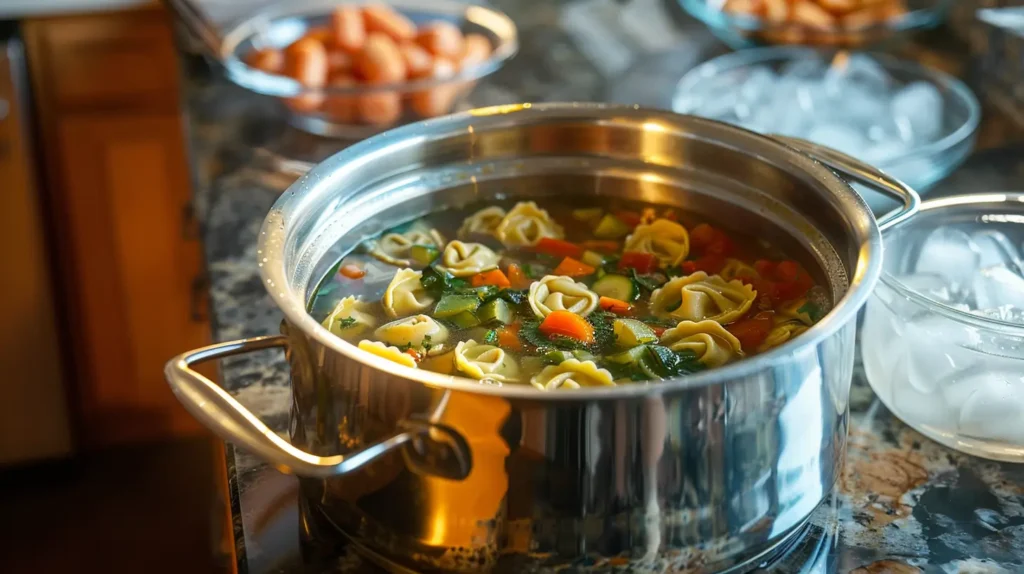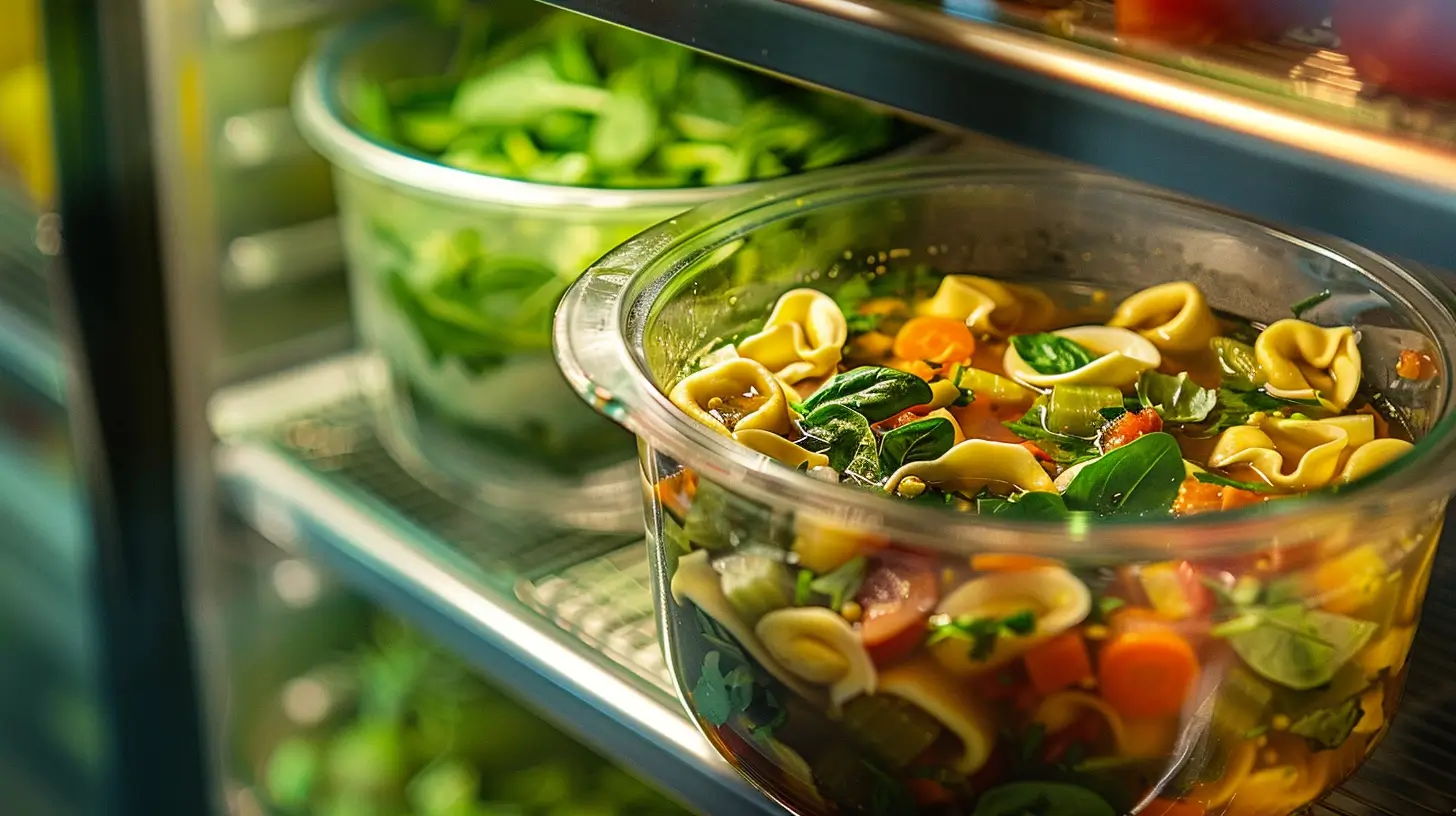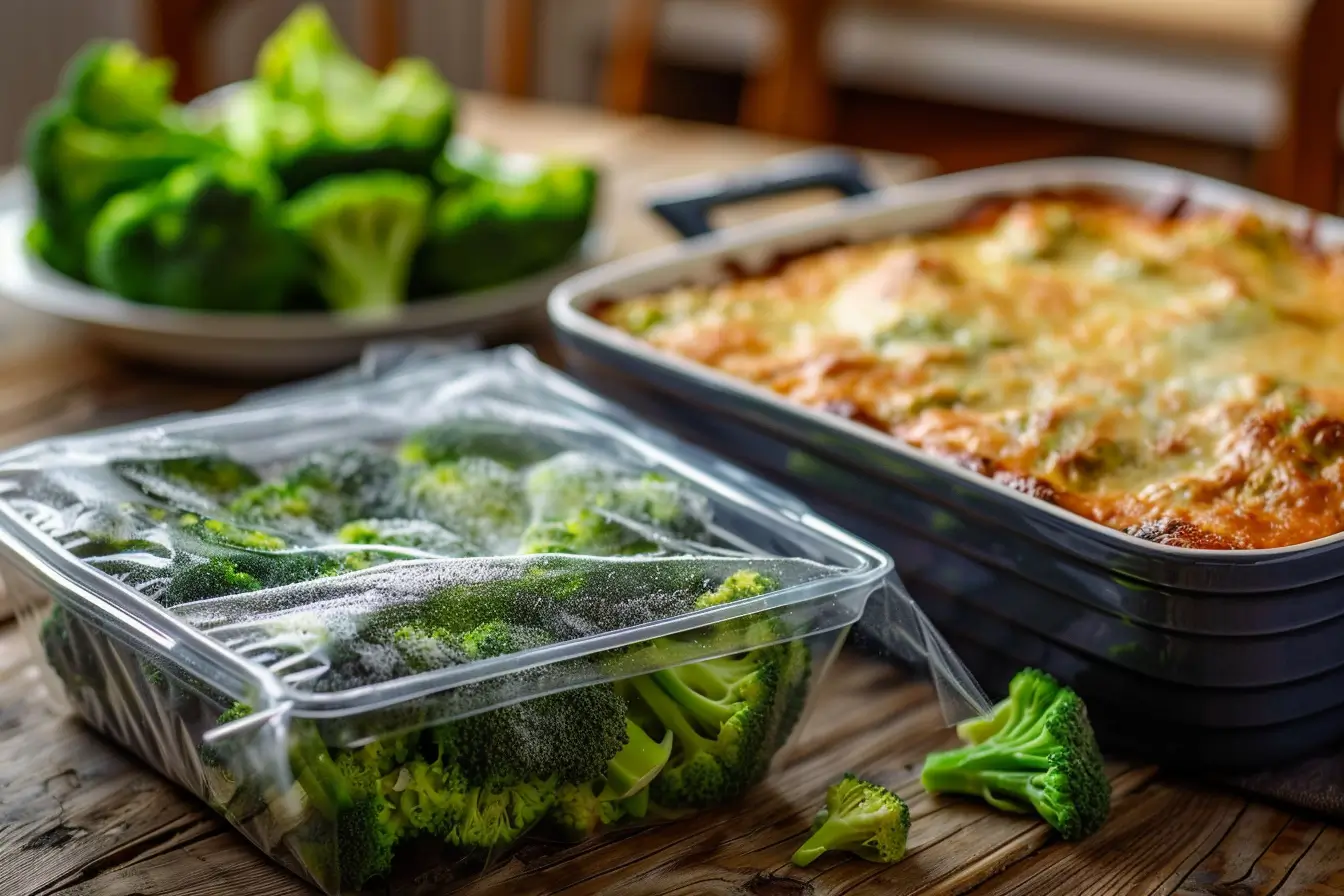Tortellini soup is a heartwarming favorite for many households, combining tender pasta, flavorful broths, and rich ingredients. But have you ever found yourself wondering how long does tortellini soup last in the fridge? Proper storage is key to enjoying the soup safely while minimizing food waste. In this guide, we’ll break down how long tortellini soup lasts in the fridge, maximize its shelf life, and avoid common storage mistakes. Let’s dive in!
What Is Tortellini Soup?
Tortellini soup is a savory dish that combines tortellini pasta, often stuffed with cheese or meat, with a variety of broths, vegetables, and proteins. Some variations are cream-based, while others use a clear broth, like chicken or vegetable stock. The richness and perishable nature of its ingredients make proper storage crucial to maintaining both its flavor and safety.
How the Ingredients Affect Shelf Life
Dairy and Cream-Based Variations
Creamy tortellini soups tend to spoil faster due to their dairy content. Milk and cream are highly perishable, and improper storage can lead to bacterial growth, which compromises the soup’s quality and safety.
Broth-Based Tortellini Soups
Broth-based tortellini soups generally last longer than their cream-based counterparts. However, ingredients like meat or tortellini itself still require careful handling to ensure the soup doesn’t spoil prematurely.
Ideal Refrigeration Time for Soup
Tortellini soup can last about 3 to 4 days in the refrigerator if stored properly. This timeframe ensures the soup remains safe to eat and retains its original flavors. However, storage conditions and handling methods can significantly impact this duration.
Ideal Storage Conditions
To keep tortellini soup fresh in the fridge, make sure to store it at or below 40°F (4°C). Use airtight containers to prevent contamination and to lock in moisture and flavor. It’s also essential to refrigerate the soup within two hours of cooking, as leaving it out longer can encourage bacterial growth.

Signs Your Soup Has Gone Bad
Even within the 3 to 4-day window, there are telltale signs that your tortellini soup might not be safe to eat:
- Texture Changes: The soup may develop a slimy consistency.
- Unpleasant Odor: A sour or off-putting smell indicates spoilage.
- Taste Alteration: If the flavor is off, it’s better to discard the soup.
How Long Does Cooked Tortellini Last in the Fridge?
Cooked tortellini on its own has a similar shelf life to tortellini soup—about 3 to 5 days when refrigerated properly. However, soups containing tortellini may spoil faster due to the additional ingredients.
Comparison Between Soup and Plain Cooked Tortellini
Plain cooked tortellini lasts slightly longer than tortellini soup because it doesn’t contain highly perishable components like cream or meat-based broth. Proper storage is crucial for both to prevent spoilage.
Extending Shelf Life
If you want to extend the shelf life of tortellini soup, consider freezing it. Frozen soup can last for up to 3 months, retaining both its taste and nutritional value. Be sure to use freezer-safe containers to avoid freezer burn.
The Risks of Storing Soup Too Long
While it’s tempting to think a refrigerated soup can last for weeks, tortellini soup should never be stored in the fridge for 2 weeks. This is because bacteria and mold can develop well before that time, even if the soup looks or smells fine.
Why 2 Weeks Is Too Long
The primary reason tortellini soup cannot last 2 weeks in the fridge is the rapid growth of harmful bacteria like Listeria or Salmonella. After 4 days, the risk of contamination increases exponentially, especially for soups containing meat or dairy. Eating spoiled soup can lead to foodborne illnesses, which cause symptoms such as stomach cramps, nausea, and diarrhea.
Safe Storage Alternatives
If you want to keep tortellini soup for longer, freezing is your best option. Freeze portions of the soup immediately after it cools to ensure freshness. Make sure to use a container that is airtight and labeled with the date to track how long it’s been stored.
Safe Practices for Soup Left at Room Temperature
Tortellini soup should not sit out for more than 2 hours at room temperature. If left out longer, the soup becomes a breeding ground for bacteria, especially in warm environments.
The “Two-Hour Rule” for Food Safety
The USDA recommends refrigerating or freezing cooked food within 2 hours. This rule is crucial because bacteria grow fastest between 40°F (4°C) and 140°F (60°C), a range known as the “danger zone.”
Risks of Leaving Soup Out Too Long
If tortellini soup sits out for over 2 hours, it’s safer to discard it. Even reheating may not kill all bacteria or eliminate toxins that have formed. Consuming soup that has been left out too long can lead to food poisoning.
Best Practices for Storing Tortellini Soup
Portioning for Convenience
Before storing tortellini soup, consider dividing it into single-serving portions. Using small, airtight containers allows for easy reheating without having to thaw or heat the entire batch. This not only saves time but also helps maintain the quality of the remaining soup by reducing repeated heating cycles.
Proper storage ensures your tortellini soup stays fresh and delicious for as long as possible. Here are some tried-and-true methods to maximize its shelf life.
Using Airtight Containers
Always store tortellini soup in airtight containers. This prevents exposure to air, which can lead to faster spoilage. Additionally, airtight storage helps lock in the soup’s flavors and prevents it from absorbing odors from other foods in the fridge.
Reheating Safely
When reheating tortellini soup, ensure it reaches an internal temperature of 165°F (74°C) to kill any bacteria that may have developed during storage. Stir the soup occasionally while reheating to ensure even heating, especially for cream-based versions.
When to Freeze Tortellini Soup
If you’re not planning to eat your tortellini soup within 3 to 4 days, freezing is an excellent option. Freezing helps preserve the soup’s flavor and texture while preventing spoilage.
How to Freeze Tortellini Soup Properly
To freeze tortellini soup effectively:
- Let the soup cool completely before transferring it to containers.
- Use freezer-safe, airtight containers or heavy-duty freezer bags.
- Label the containers with the date and type of soup for easy tracking.
- Avoid filling containers to the brim to allow room for expansion during freezing.
Tips for Thawing Tortellini Soup
When it’s time to enjoy your frozen tortellini soup, thawing it safely is crucial:
- In the Refrigerator: For best results, thaw the soup overnight in the fridge. This gradual thawing method preserves the soup’s texture and flavor.
- In the Microwave: Use the defrost setting on your microwave to thaw portions quickly. Transfer to a microwave-safe bowl and heat in short intervals, stirring occasionally.
- On the Stovetop: Place the frozen soup directly in a pot and heat over low to medium heat, stirring frequently to prevent sticking or uneven heating.
To freeze tortellini soup effectively:
- Let the soup cool completely before transferring it to containers.
- Use freezer-safe, airtight containers or heavy-duty freezer bags.
- Label the containers with the date and type of soup for easy tracking.
- Avoid filling containers to the brim to allow room for expansion during freezing.
How Long Frozen Tortellini Soup Lasts
Frozen tortellini soup can last for up to 3 months. For best results, thaw the soup in the fridge overnight before reheating. Avoid defrosting at room temperature, as it can lead to bacterial growth.
How to Safely Transport Tortellini Soup
Sometimes, you may need to take tortellini soup to a potluck or picnic. Transporting it safely ensures it retains its flavor and remains safe to consume.
Use Insulated Containers
Insulated containers are ideal for keeping the soup warm or cold during transport. Ensure the lid is secure to prevent spills.
Quick Refrigeration Upon Arrival
If the soup is not served immediately, refrigerate it promptly at the destination. This step prevents it from entering the “danger zone” temperature range for bacteria growth.
Creative Ways to Use Leftover Tortellini Soup
Leftovers don’t have to be boring! Here are some creative ways to transform your tortellini soup into new and exciting meals.
Turn It Into a Casserole
Transfer your leftover tortellini soup into a baking dish, top it with shredded cheese, and bake it in the oven until bubbly and golden. This creates a comforting casserole that’s perfect for a quick dinner.
Blend It Into a New Soup
Use an immersion blender to puree the leftover soup into a creamy texture. Add some fresh herbs or a splash of cream for a brand-new take on your meal.
Use It as a Pasta Sauce
Strain the broth from the soup and use the tortellini and vegetables as a flavorful pasta topping. Drizzle with olive oil or sprinkle Parmesan cheese for added flavor.
Nutritional Considerations of Tortellini Soup
Tortellini soup can be a hearty and nutritious meal, but the nutritional content varies based on the ingredients used. Here’s a breakdown of key components to consider:
Calorie Content
The calorie count of tortellini soup depends largely on whether it’s cream-based or broth-based. Creamy versions tend to have higher calories due to the dairy content, while broth-based soups are lighter but equally filling.
Protein and Fiber
Including proteins like chicken or beans in the soup can boost its nutritional profile, making it a balanced meal. Vegetables like spinach, carrots, and celery add fiber, promoting digestive health.
Reducing Sodium Levels
Canned broths and soups can be high in sodium. Opt for low-sodium broth or make your own at home to control the salt content. This adjustment helps make the soup a healthier choice for those watching their sodium intake.
Customizing for Dietary Needs
For a low-carb version, use zoodles (zucchini noodles) instead of tortellini. You can also make a dairy-free version by replacing cream with coconut milk or cashew cream for a rich texture without the dairy.
Frequently Asked Questions
How long is tortellini soup good for in the refrigerator?
Tortellini soup lasts about 3 to 4 days in the refrigerator when stored in airtight containers and at the proper temperature (below 40°F or 4°C).
How long does cooked tortellini last in the fridge?
Cooked tortellini, when stored separately from soup, can last 3 to 5 days in the refrigerator. However, once combined in soup, its shelf life depends on the soup’s other ingredients.
Can soup last 2 weeks in the fridge?
No, tortellini soup or any cooked soup should not be stored in the fridge for 2 weeks. Bacteria can develop after 4 days, making the soup unsafe to eat. For longer storage, freeze the soup instead.
How long can tortellini soup sit out?
Tortellini soup should not sit out at room temperature for more than 2 hours. If it’s left out for longer, it should be discarded to avoid foodborne illnesses.
Conclusion
For more inspiration, check out our guide to making the perfect Creamy Chicken Tortellini Soup Recipe!
Tortellini soup is a delightful dish, but understanding how long tortellini soup lasts in the fridge is essential for both safety and flavor. To recap, refrigerated tortellini soup typically lasts 3 to 4 days, while freezing can extend its shelf life up to 3 months. Always use airtight containers, refrigerate promptly, and reheat thoroughly to maintain the soup’s quality and safety.
Takeaways:
- Store tortellini soup at or below 40°F (4°C) in airtight containers.
- Never leave soup out for more than 2 hours at room temperature.
- Freeze portions you don’t plan to eat within a few days for longer storage.
Have you tried freezing tortellini soup or have any storage tips of your own? Share your experiences and questions in the comments below—we’d love to hear from you!








